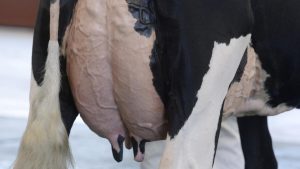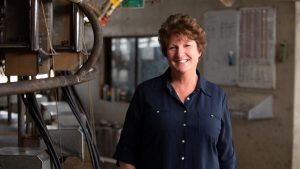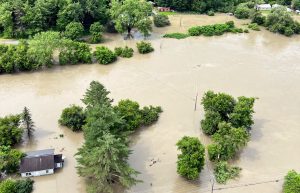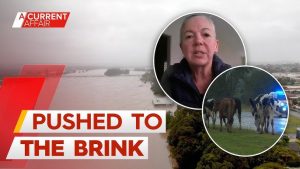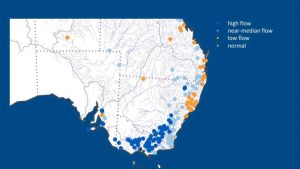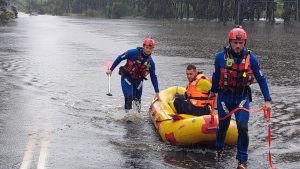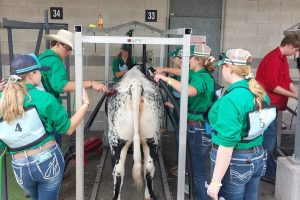
Key points:
- Farmers are bracing themselves for more heavy rain and possible flooding
- Tasmanian farmers say they feel more prepared compared to the 2016 floods
- Some farmers are still repairing damage from 2016
Farmers anxiously plan their recovery, but are simultaneously bracing themselves for more heavy rainfall forecast this weekend.
It’s a new normal of wetter, unpredictable weather.
The last severe flooding event in 2016 inundated Tasmania’s north and north west in June and Huonville in July, taking three lives with it and causing $180 million in damage.
Back then, Luke Bloomfield watched a wall of water take over his dairy farm along the Mersey River between Kimberley and Merseylea.
But this time, Mr Bloomfield said he felt more prepared.
“We moved our livestock and any pumps that needed moving,” he said.
“There’s nothing you can do once the water starts coming. You just have to wait and see how much damage is done and then get in and work really hard and get it fixed.
“I’ve had cows down with milk fever and calves and young stock with pneumonia to treat, and problems with pink eye at the moment as well.
“That comes as a priority over the flood work, to be honest, making sure the animal health is alright.”
Mr Bloomfield’s farm has been in his family for more than a century, and in that time he said knowledge and awareness of flood preparation had “definitely” been passed down.
It took Mr Bloomfield nearly 12 months to repair damage from the 2016 floods.
He said he was slowly working through this year’s challenge.
“We’re getting there. We’re getting the fences all back up, but we haven’t started on work to the river bank,” Mr Bloomfield said.

Life the main objective
In 2016, Judbury farmer Mark O’May watched his sheep wash away during his attempts to save them. Due to their stench, some would be found weeks later tangled in debris.
That was when the Huon River burst its bank, reached a flood peak of 4.25 metres and transformed Mr O’May’s farm into a lake.
“Everything just moves. Even big rocks the size of basketballs are just being hurled down the paddock like they were made out of foam,” he said.
“The water was 15-20 feet [4.5–6 metres] over our heads. Everything was a lake. Everything was totally underwater. The sheds were totally under water, you couldn’t see the cattle yards.”
This year, Mr O’May has been hit by two floods amid his continuing attempts to rebuild from the major damage done to his property six years ago, which he believed amounted to up to $1 million worth of damage.
“Fortunately this time I hadn’t been able to put any fencing up again because the ground was still so saturated,” he said.
Mr O’May said he was optimistic about the community response to recent flooding but, to prepare for future weather events, practices had to change.
“As easy as it is to say, you can rebuild. But at the end of the day, as long as you’re alive, life is the main objective,” he said.
“At the end of the day just keep your head up and rally around with the rest of the community to help where it’s needed.”




